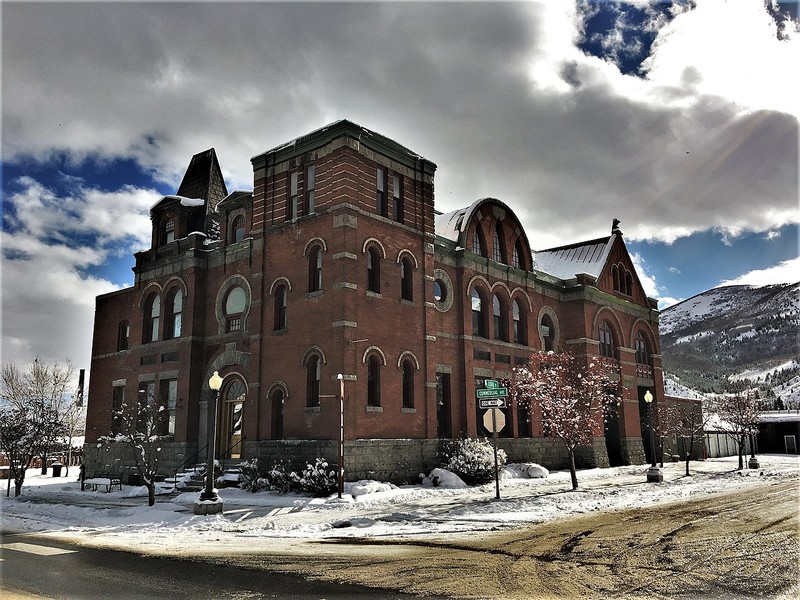City Hall Center
Introduction
Text-to-speech Audio
Images
The old City Hall building was erected in 1896 and is the current home of the Copper Village Museum & Art Center.

Backstory and Context
Text-to-speech Audio
The city of Anaconda was founded by copper magnate Marcus Daly (1841-1900) in 1883. He had owned the Anaconda mine in Butte since 1881, where a large vein of copper (300 feet deep and 100 feet wide; it was one of the biggest discovered at the time) was found under silver a deposit. Copper was increasingly in demand as it was needed for telegraph communication and electricity, both of which were just starting to be used around the country. To process the copper ore, Daly built a smelter here in Anaconda and platted the town around it (the smelter site is now Anaconda Smoke Stack State Park; the only structure remaining is the tall 585-foot smokestack built in 1918). Daly became rich and was among those who were nicknamed the "Copper Kings."
By the time the City Hall building was erected, Anaconda was a thriving mining town. In fact, Daly had a dream that Anaconda would become Montana's capital city. The building's design reflects this desire, embodying the city's aspirations to become an important civic and economic center. As alluded to above, the building incorporates a number of architectural styles including Romanesque arches, Gothic tracery, and a Chateauesque (French) roof topping the northeast tower. The city used the old building until 1978 and it was slated for demolition as part of a redevelopment project. Fortunately, a local preservation group worked to prevent this from happening.
Sources
"About." VisitMT.com. Accessed June 15, 2020. https://www.visitmt.com/listings/general/art-museum/copper-village-museum-and-arts-center.html.
Finnegan, Alice. "City Hall." National Park Service - National Register of Historic Places Nomination Form. August 10, 1979. https://npgallery.nps.gov/NRHP/GetAsset/NRHP/79003722_text.
"Marcus Daly." Daly Mansion. Accessed June 15, 2020. http://dalymansion.org/MarcusDalyHistory.html.
"Marcus Daly." New World Encyclopedia. Accessed June 15, 2020. https://www.newworldencyclopedia.org/entry/Marcus_Daly.
The Montana National Register Sign Program. “City Hall, Anaconda.” Historic Montana. Accessed June 15, 2020. https://historicmt.org/items/show/329.
Jon Roanhaus, via Wikimedia Commons: https://commons.wikimedia.org/wiki/File:Anaconda_City_Hall_NRHP_79003722_Deer_Lodge_County,_MT.jpg
